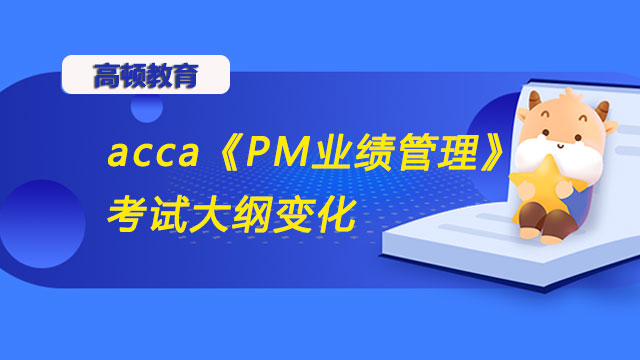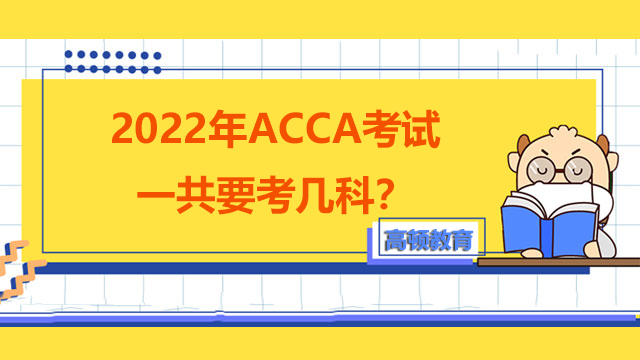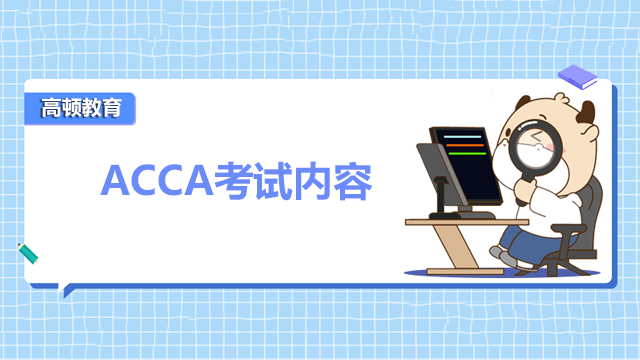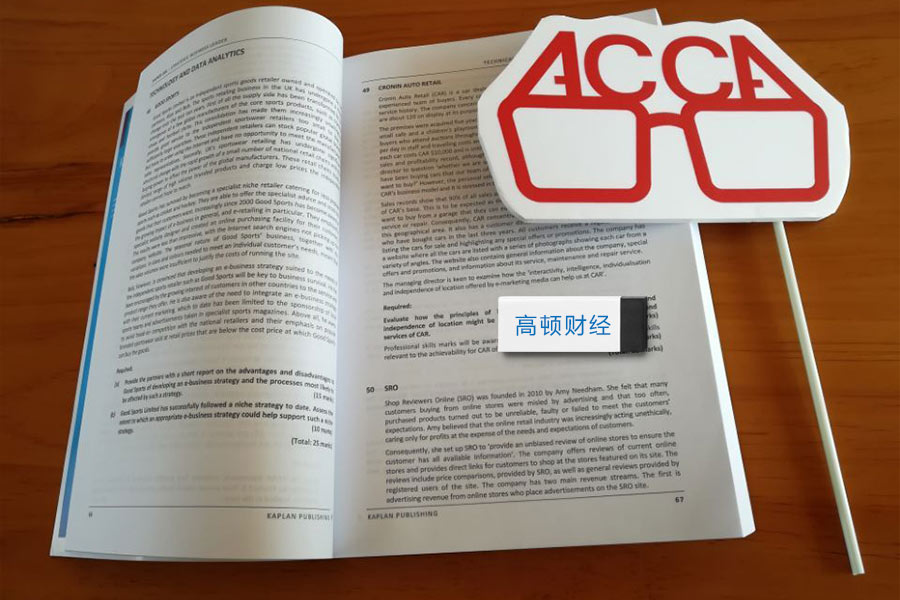2015年ACCA P2 公司报告考试大纲
来源:
高顿网校
2015-03-25
? ACCA 2014 All rights reserved.
1
Corporate Reporting (INT)
(P2) December 2014 to
June 2015
This syllabus and study guide is designed to help
with planning study and to provide detailed
information on what could be assessed in
any examination session.
THE STRUCTURE OF THE SYLLABUS AND
STUDY GUIDE
Relational diagram of paper with other papers
This diagram shows direct and indirect links
between this paper and other papers preceding or
following it. Some papers are directly underpinned
by other papers such as Advanced Performance
Management by Performance Management. These
links are shown as solid line arrows. Other papers
only have indirect relationships with each other
such as links existing between the accounting and
auditing papers. The links between these are shown
as dotted line arrows. This diagram indicates where
you are expected to have underpinning knowledge
and where it would be useful to review previous
learning before undertaking study.
Overall aim of the syllabus
This explains briefly the overall objective of the
paper and indicates in the broadest sense the
capabilities to be developed within the paper.
Main capabilities
This paper’s aim is broken down into several main
capabilities which divide the syllabus and study
guide into discrete sections.
Relational diagram of the main capabilities
This diagram illustrates the flows and links between
the main capabilities (sections) of the syllabus and
should be used as an aid to planning teaching and
learning in a structured way.
Syllabus rationale
This is a narrative explaining how the syllabus is
structured and how the main capabilities are linked.
The rationale also explains in further detail what the
examination intends to assess and why.
Detailed syllabus
This shows the breakdown of the main capabilities
(sections) of the syllabus into subject areas. This is
the blueprint for the detailed study guide.
Approach to examining the syllabus
This section briefly explains the structure of the
examination and how it is assessed.
Study Guide
This is the main document that students, learning
and content providers should use as the basis of
their studies, instruction and materials.
Examinations will be based on the detail of the
study guide which comprehensively identifies what
could be assessed in any examination session.
The study guide is a precise reflection and
breakdown of the syllabus. It is divided into sections
based on the main capabilities identified in the
syllabus. These sections are divided into subject
areas which relate to the sub-capabilities included
in the detailed syllabus. Subject areas are broken
down into sub-headings which describe the detailed
outcomes that could be assessed in examinations.
These outcomes are described using verbs
indicating what exams may require students to
demonstrate, and the broad intellectual level at
which these may need to be demonstrated
(*see intellectual levels below)。
INTELLECTUAL LEVELS
The syllabus is designed to progressively broaden
and deepen the knowledge, skills and professional
values demonstrated by the student on their way
through the qualification.
The specific capabilities within the detailed
syllabuses and study guides are assessed at one of
three intellectual or cognitive levels:
LevelⅠ: Knowledge and comprehension
? ACCA 2014 All rights reserved.
2
LevelⅡ: Application and analysis
LevelⅢ: Synthesis and evaluation
Very broadly, these intellectual levels relate to the
three cognitive levels at which the Knowledge
module, the Skills module and the Professional level
are assessed.
Each subject area in the detailed study guide
included in this document is given a 1, 2, or
3 superscript, denoting intellectual level, marked at
the end of each relevant line. This gives an
indication of the intellectual depth at which an area
could be assessed within the examination. However,
while level 1 broadly equates with the Knowledge
module, level 2 equates to the Skills module and
level 3 to the Professional level, some lower level
skills can continue to be assessed as the student
progresses through each module and level. This
reflects that at each stage of study there will be a
requirement to broaden, as well as deepen
capabilities. It is also possible that occasionally
some higher level capabilities may be assessed at
lower levels.
LEARNING HOURS AND EDUCATION
RECOGNITION
The ACCA qualification does not prescribe or
recommend any particular number of learning hours
for examinations because study and learning
patterns and styles vary greatly between people and
organisations. This also recognises the wide
diversity of personal, professional and educational
circumstances in which ACCA students find
themselves.
As a member of the International Federation of
Accountants, ACCA seeks to enhance the education
recognition of its qualification on both national and
international education frameworks, and with
educational authorities and partners globally. In
doing so, ACCA aims to ensure that its qualifications
are recognized and valued by governments,
regulatory authorities and employers across all
sectors. To this end, ACCA qualifications are
currently recognized on the education frameworks in
several countries. Please refer to your national
education framework regulator for further
information.
Each syllabus contains between 23 and 35 main
subject area headings depending on the nature of
the subject and how these areas have been broken
down.
GUIDE TO EXAM STRUCTURE
The structure of examinations varies within and
between modules and levels.
The Fundamentals level examinations contain
100% compulsory questions to encourage
candidates to study across the breadth of each
syllabus.
The Knowledge module is assessed by equivalent
two-hour paper based and computer based
examinations.
The Skills module examinations F5-F9 are all paper
based three-hour papers containing a mix of
objective and longer type questions. The Corporate
and Business Law (F4) paper is a two- hour
computer based objective test examination which is
also available as a paper based version from the
December 2014 examination session.
The Professional level papers are all three-hour
paper based examinations, all containing two
sections. Section A is compulsory, but there will be
some choice offered in Section B.
For all three hour examination papers, ACCA has
introduced 15 minutes reading and planning time.
This additional time is allowed at the beginning of
each three-hour examination to allow candidates to
read the questions and to begin planning their
answers before they start writing in their answer
books. This time should be used to ensure that all
the information and exam requirements are properly
read and understood.
During reading and planning time candidates may
only annotate their question paper. They may not
write anything in their answer booklets until told to
do so by the invigilator.
The Essentials module papers all have a Section A
containing a major case study question with all
requirements totalling 50 marks relating to this
case. Section B gives students a choice of two from
three 25 mark questions.
? ACCA 2014 All rights reserved.
3
Section A of both the P4 and P5 Options papers
contain one 50 mark compulsory question, and
Section B will offer a choice of two from three
questions each worth 25 marks each.
Section A of each of the P6 and P7 Options papers
contains 60 compulsory marks from two questions;
question 1 attracting 35 marks, and question 2
attracting 25 marks. Section B of both these
Options papers will offer a choice of two from three
questions, with each question attracting 20 marks.
All Professional level exams contain four
professional marks.
The pass mark for all ACCA Qualification
examination papers is 50%.
GUIDE TO EXAMINATION ASSESSMENT
ACCA reserves the right to examine anything
contained within the study guide at any examination
session. This includes knowledge, techniques,
principles, theories, and concepts as specified.
For the financial accounting, audit and assurance,
law and tax papers except where indicated
otherwise, ACCA will publish examinable
documents once a year to indicate exactly
what regulations and legislation could potentially be
assessed within identified examination sessions
For paper based examinations regulation issued or
legislation passed on or before 31st August annually,
will be examinable from 1st September of the
following year to 31st August t of the year after that.
Please refer to the examinable documents for the
paper (where relevant) for further information.
Regulation issued or legislation passed in
accordance with the above dates may be
examinable even if the effective date is in the future.
The term issued or passed relates to when
regulation or legislation has been formally approved.
The term effective relates to when regulation or
legislation must be applied to an entity transactions
and business practices.
The study guide offers more detailed guidance on
the depth and level at which the examinable
documents will be examined. The study guide
should therefore be read in conjunction with the
examinable documents list.
? ACCA 2014 All rights reserved.
4
Syllabus
AIM
To apply knowledge, skills and exercise professional
judgement in the application and evaluation of
financial reporting principles and practices in a
range of business contexts and situations.
MAIN CAPABILITIES
On successful completion of this paper candidates
should be able to:
A Discuss the professional and ethical duties of
the accountant
B Evaluate the financial reporting framework
C Advise on and report the financial
performance of entities
D Prepare the financial statements of groups of
entities in accordance with relevant
accounting standards
E Explain reporting issues relating to
specialised entities
F Discuss the implications of changes in
accounting regulation on financial reporting
G Appraise the financial performance and
position of entities
H Evaluate current developments
RELATIONAL DIAGRAM OF MAIN CAPABILITIES
FA (F3)
FR (F7)
CR
(P2)
AAA
(P7)
The appraisal of financial
performance and position of
entities (G)
Financial statements of
groups of entities (D)
Current developments
(H)
The financial
reporting framework (B)
The professional and
ethical duty of the
accountant (A)
Reporting
the financial
performance of entities (C)
Implications of changes in
accounting regulation on
financial reporting (F)
Specialised
entities (E)
? ACCA 2014 All rights reserved.
5
RATIONALE
The syllabus for Paper P2, Corporate Reporting,
assumes knowledge acquired at the Fundamentals
level including the core technical capabilities to
prepare and analyse financial reports for single and
combined entities.
The Paper P2 syllabus takes the subject into greater
depth and contextualises the role of the accountant
as a professional steward and adviser/analyst by
initially exploring the wider professional duties and
responsibilities of the accountant to the stakeholders
of an organisation.
The syllabus examines the financial reporting
framework within which the accountant operates
and examines detailed financial reporting
requirements for entities leading to the preparation
of group financial reports in accordance with
generally accepted accounting practice and relevant
standards.
The syllabus then deals with the nature of reporting
for specialised entities including not-for-profit and
small and medium-sized enterprises.
The final sections of the syllabus explore – in more
depth – the role of the accountant as financial
analyst and adviser through the assessment of
financial performance and position of entities, and
the accountant’s role in assessing and advising on
the implications of accounting regulation on
corporate reporting.
Finally, the syllabus covers the evaluation of current
developments and their implications for financial
reporting.
? ACCA 2014 All rights reserved.
6
DETAILED SYLLABUS
A The professional and ethical duty of the
accountant
1. Professional behaviour and compliance with
accounting standards
2. Ethical requirements of corporate reporting
and the consequences of unethical behaviour
3. Social responsibility
B The financial reporting framework
1. The applications, strengths and weaknesses of
an accounting framework
2. Critical evaluation of principles and practices
C Reporting the financial performance of entities
1. Performance reporting
2. Non-current assets
3. Financial instruments
4. Leases
5. Segment reporting
6. Employee benefits
7. Income taxes
8. Provisions, contingencies and events after the
reporting date
9. Related parties
10. Share-based payment
11. Reporting requirements of small and mediumsized
entities (SMEs)
D Financial statements of groups of entities
1. Group accounting including statements of cash
flows
2. Continuing and discontinued interests
3. Changes in group structures
4. Foreign transactions and entities
E Specialised entities and specialised
transactions
1. Financial reporting in specialised, not-for-profit
and public sector entities
2. Entity reconstructions
F Implications of changes in accounting
regulation on financial reporting
1. The effect of changes in accounting standards
on accounting systems
2. Proposed changes to accounting standards
G The appraisal of financial performance and
position of entities
1. The creation of suitable accounting policies
2. Analysis and interpretation of financial
information and measurement of performance
H Current developments
1. Environmental and social reporting
2. Convergence between national and
international reporting standards
3. Current reporting issues
? ACCA 2014 All rights reserved.
7
APPROACH TO EXAMINING THE SYLLABUS
The syllabus is assessed by a three-hour paperbased
examination. It examines professional
competences within the corporate reporting
environment.
Students will be examined on concepts, theories,
and principles, and on their ability to question and
comment on proposed accounting treatments.
Students should be capable of relating professional
issues to relevant concepts and practical situations.
The evaluation of alternative accounting practices
and the identification and prioritisation of issues will
be a key element of the paper. Professional and
ethical judgement will need to be exercised,
together with the integration of technical knowledge
when addressing corporate reporting issues in a
business context.
Global issues will be addressed via the current
issues questions on the paper. Students will be
required to adopt either a stakeholder or an external
focus in answering questions and to demonstrate
personal skills such as problem solving, dealing with
information and decision making.
The paper also deals with specific professional
knowledge appropriate to the preparation and
presentation of consolidated and other financial
statements from accounting data, to conform with
accounting standards.
The paper will comprise two sections.
Section A Compulsory question 50 marks
Section B 2 from 3 questions of
25 marks each 50 marks
100 marks
Section A will consist of one scenario based
question worth 50 marks. It will deal with the
preparation of consolidated financial statements
including group statements of cash flows and with
issues in financial reporting.
Students will be required to answer two out of three
questions in Section B, which will normally
comprise two questions which will be scenario or
case-study based and one essay question which
may have some computational element. Section B
could deal with any aspects of the syllabus.
? ACCA 2014 All rights reserved.
8
Study Guide
A THE PROFESSIONAL AND ETHICAL DUTIES
OF THE ACCOUNTANT
1. Professional behaviour and compliance with
accounting standards
a) Appraise and discuss the ethical and
professional issues in advising on corporate
reporting.[3]
b) Assess the relevance and importance of ethical
and professional issues in complying with
accounting standards.[3]
2. Ethical requirements of corporate reporting and
the consequences of unethical behaviour
a) Appraise the potential ethical implications of
professional and managerial decisions in the
preparation of corporate reports.[3]
b) Assess the consequences of not upholding
ethical principles in the preparation of
corporate reports.[3]
3. Social Responsibility
a) Discuss the increased demand for transparency
in corporate reports, and the emergence of
non-financial reporting standards.[3]
b) Discuss the progress towards a framework for
integrated reporting.[3]
B THE FINANCIAL REPORTING FRAMEWORK
1. The applications, strengths and weaknesses of
an accounting framework
a) Evaluate the valuation models adopted by
standard setters.[3]
b) Discuss the use of an accounting framework in
underpinning the production of accounting
standards.[3]
c) Assess the success of such a framework in
introducing rigorous and consistent accounting
standards.[3]
2. Critical evaluation of principles and practices
a) Identify the relationship between accounting
theory and practice.[2]
b) Critically evaluate accounting principles and
practices used in corporate reporting.[3]
C REPORTING THE FINANCIAL PERFORMANCE
OF ENTITIES
1. Performance reporting
a) Prepare reports relating to corporate
performance for external stakeholders.[3]
b) Discuss the issues relating to the recognition of
revenue.[3]
c) Evaluate proposed changes to reporting
financial performance.[3]
2. Non-current assets
a) Apply and discuss the timing of the recognition
of non-current assets and the determination of
their carrying amounts including impairments
and revaluations.[3]
b) Apply and discuss the treatment of non-current
assets held for sale.[3]
c) Apply and discuss the accounting treatment of
investment properties including classification,
recognition and measurement issues.[3]
d) Apply and discuss the accounting treatment of
intangible assets including the criteria for
recognition and measurement subsequent to
acquisition and classification.[3]
3. Financial Instruments
a) Apply and discuss the recognition and derecognition
of financial assets and financial
liabilities.[2]
b) Apply and discuss the classification of financial
assets and financial liabilities and their
measurement.[2]
? ACCA 2014 All rights reserved.
9
c) Apply and discuss the treatment of gains and
losses arising on financial assets and financial
liabilities.[2]
d) Apply and discuss the treatment of
impairments of financial assets.[2]
e) Account for derivative financial instruments,
and simple embedded derivatives.[2]
f) Outline the principles of hedge accounting and
account for fair value hedges and cash flow
hedges including hedge effectiveness.[2]
4. Leases
a) Apply and discuss the classification of leases
and accounting for leases by lessors and
lessees.[3]
b) Account for and discuss sale and leaseback
transactions.[3]
5. Segment Reporting
a) Determine the nature and extent of reportable
segments.[3]
b) Specify and discuss the nature of segment
information to be disclosed.[3]
6. Employee Benefits
a) Apply and discuss the accounting treatment of
short term and long term employee benefits.
[3]
b) Apply and discuss the accounting treatment of
defined contribution and defined benefit plans.
[3]
c) Account for gains and losses on settlements
and curtailments.[2]
d) Account for the “Asset Ceiling” test and the
reporting of actuarial gains and losses.[2]
7. Income taxes
a) Apply and discuss the recognition and
measurement of deferred tax liabilities and
deferred tax assets.[3]
b) Determine the recognition of tax expense or
income and its inclusion in the financial
statements.[3]
8. Provisions, contingencies and events after the
reporting date
a) Apply and discuss the recognition, derecognition
and measurement of provisions,
contingent liabilities and contingent assets
including environmental provisions.[3]
b) Calculate and discuss restructuring
provisions.[3]
c) Apply and discuss the accounting for events
after the reporting date.[3]
d) Determine and report going concern issues
arising after the reporting date.[3]
9. Related parties
a) Determine the parties considered to be related
to an entity.[3]
b) Identify the implications of related party
relationships and the need for disclosure.[3]
10. Share based payment
a) Apply and discuss the recognition and
measurement criteria for share-based payment
transactions.[3]
b) Account for modifications, cancellations and
settlements of share based payment
transactions.[2]
11. Reporting requirements of small and mediumsized
entities (SMEs)
a) Discuss solutions to the problem of differential
financial reporting.[3]
b) Discuss the accounting treatments not
allowable under the IFRS for SMEs including
the revaluation model for certain assets [3]
c) Discuss and apply the simplifications
introduced by the IFRS for SMEs including
accounting for goodwill and intangible assets,
financial instruments, defined benefit schemes,
? ACCA 2014 All rights reserved.
10
exchange differences and associates and joint
ventures. [3]
D FINANCIAL STATEMENTS OF GROUPS OF
ENTITIES
1. Group accounting including statements of cash
flows
a) Apply the method of accounting for business
combinations including complex group
structures.[3]
b) Apply the principles in determining the cost of
a business combination.[3]
c) Apply the recognition and measurement criteria
for identifiable acquired assets and liabilities
and goodwill including step acquisitions.[3]
d) Apply and discuss the criteria used to identify a
subsidiary and an associate.[3]
e) Determine and apply appropriate procedures to
be used in preparing group financial
statements.[3]
f) Identify and outline:
- the circumstances in which a group is
required to prepare consolidated financial
statements.[2]
- the circumstances when a group may claim
and exemption from the preparation of
consolidated financial statements.[2]
- why directors may not wish to consolidate a
subsidiary and where this is permitted.[2]
g) Apply the equity method of accounting for
associates.[3]
h) Outline and apply the key definitions and
accounting methods which relate to interests in
joint arrangements.[3]
i) Prepare and discuss group statements of cash
flows.[3]
2. Continuing and discontinued interests
a) Prepare group financial statements where
activities have been discontinued, or have been
acquired or disposed of in the period.[3]
b) Apply and discuss the treatment of a subsidiary
which has been acquired exclusively with a
view to subsequent disposal.[3]
3. Changes in group structures
a) Discuss the reasons behind a group
reorganisation.[3]
b) Evaluate and assess the principal terms of a
proposed group reorganisation.[3]
4. Foreign transactions and entities
a) Outline and apply the translation of foreign
currency amounts and transactions into the
functional currency and the presentational
currency.[3]
b) Account for the consolidation of foreign
operations and their disposal.[2]
E SPECIALISED ENTITIES AND SPECIALISED
TRANSACTIONS
1. Financial reporting in specialised, not-for-profit
and public sector entities
a) Apply knowledge from the syllabus to
straightforward transactions and events arising
in specialised, not-for-profit, and public sector
entities. [3]
2. Entity reconstructions
a) Identify when an entity may no longer be
viewed as a going concern or uncertainty exists
surrounding the going concern status.[2]
b) Identify and outline the circumstances in which
a reconstruction would be an appropriate
alternative to a company liquidation.[2]
c) Outline the appropriate accounting treatment
required relating to reconstructions.[2]
F IMPLICATIONS OF CHANGES IN
ACCOUNTING REGULATION ON FINANCIAL
REPORTING
1. The effect of changes in accounting standards
on accounting systems
? ACCA 2014 All rights reserved.
11
a) Apply and discuss the accounting implications
of the first time adoption of a body of new
accounting standards.[3]
2. Proposed changes to accounting standards
a) Identify issues and deficiencies which have led
to a proposed change to an accounting
standard.[2]
G THE APPRAISAL OF FINANCIAL
PERFORMANCE AND POSITION OF ENTITIES
1. The creation of suitable accounting policies
a) Develop accounting policies for an entity which
meet the entity’s reporting requirements.[3]
b) Identify accounting treatments adopted in
financial statements and assess their suitability
and acceptability.[3]
2. Analysis and interpretation of financial
information and measurement of performance
a) Select and calculate relevant indicators of
financial and non-financial performance.[3]
b) Identify and evaluate significant features and
issues in financial statements.[3]
c) Highlight inconsistencies in financial
information through analysis and application of
knowledge.[3]
d) Make inferences from the analysis of
information taking into account the limitation
of the information, the analytical methods used
and the business environment in which the
entity operates.[3]
H CURRENT DEVELOPMENTS
1. Environmental and social reporting
a) Appraise the impact of environmental, social,
and ethical factors on performance
measurement.[3]
b) Evaluate current reporting requirements in the
area including the development of integrated
reporting.[3]
c) Discuss why entities might include disclosures
relating to the environment and society.[3]
2. Convergence between national and
international reporting standards
a) Evaluate the implications of worldwide
convergence with International Financial
Reporting Standards.[3]
b) Discuss the influence of national regulators on
international financial reporting.[2]
3. Current reporting issues
a) Discuss current issues in corporate reporting.[3]
? ACCA 2014 All rights reserved.
12
NOTE OF SIGNIFICANT CHANGES TO STUDY
GUIDE PAPER P2 INT
ACCA periodically reviews its qualification syllabuses so that they fully meet the needs of stakeholders such as
employers, students, regulatory and advisory bodies and learning providers.
Table 1 – Additions to P2 INT
There have not been any additions to the study guide for the exam year commencing 1 September 2014.
However there have been minor amendments to the wording of some of the study guide outcomes corresponding
to changes within examinable documents.
Section and subject area Syllabus content
A3 b) Discuss the progress towards a framework for
integrated reporting
H1b) Evaluate current reporting requirements in the area
including the draft Integrated Reporting Framework
E1a) Apply knowledge from the syllabus to straightforward
transactions and events arising in specialised, not-forprofit,
and public sector entities.
(The inclusion of IAS 41 Agriculture in the examinable
documents for this paper means that this is a business
sector that could now be examined under this
outcome.)
Table 2 – Deletions to P2 INT
There have not been two specific deletions from the study guide for the exam year commencing 1 September
2014 as detailed in the table below. . However there have also been changes made within the examinable
documents, particularly in respect of exposure drafts that may be examined.
Section and subject area (in prior year study guide) Syllabus content
C11 a) Outline the principal considerations in developing a set
of accounting standards for SMEs
C 11 c) Discuss the reasons why the IFRS for SMEs does not
address certain topics.
高顿网校温馨提示: 通过ACCA考试实属不易,首先要有执着的精神,其次是不断勤奋的学习,高顿网校为大家提供ACCA题库免费做题,希望助大家一臂之力,查看详情》
| ACCA网络课程 | 课程专业名称 | 讲师 | 试听 |
 85%的人正在学习该课程 85%的人正在学习该课程 | ACCA 全维度网课体验课程 实景课堂与独立录制 覆盖所有知识点,根据学习计划推进学习进度 | 高顿名师 |  |
 70%的人正在学习该课程 70%的人正在学习该课程 | ACCA网课全科卡(8.2折) 为零基础刚开始学习ACCA的学员特别定制 | 高顿名师 |  |
精彩推荐:
版权声明:本条内容自发布之日起,有效期为一个月。凡本网站注明“来源高顿教育”或“来源高顿网校”或“来源高顿”的所有作品,均为本网站合法拥有版权的作品,未经本网站授权,任何媒体、网站、个人不得转载、链接、转帖或以其他方式使用。
经本网站合法授权的,应在授权范围内使用,且使用时必须注明“来源高顿教育”或“来源高顿网校”或“来源高顿”,并不得对作品中出现的“高顿”字样进行删减、替换等。违反上述声明者,本网站将依法追究其法律责任。
本网站的部分资料转载自互联网,均尽力标明作者和出处。本网站转载的目的在于传递更多信息,并不意味着赞同其观点或证实其描述,本网站不对其真实性负责。
如您认为本网站刊载作品涉及版权等问题,请与本网站联系(邮箱fawu@gaodun.com,电话:021-31587497),本网站核实确认后会尽快予以处理。
点一下领资料
【整理版】ACCA各科目历年真题
真题高频考点,刷题全靠这份资料
下载合集
acca全科学习思维导图
梳理核心考点,一图看懂全部章节
下载合集
2023年acca考纲解析
覆盖科目重难点,备考按照计划走
下载合集
acca备考 热门问题解答
- acca考试怎么搭配科目?
-
建议优先选择相关联的科目进行搭配报考,这样可以提高备考效率,减轻备考压力,1、F1-F4:为随时机考科目,难度较低,这里可以自行随意选择考试顺序。2、F5-F9:如果你的工作的和财务会计或者审计有关、或者你比较擅长财务和审计的话,推荐先考F7和F8。你可以选择一起考ACCA考试科目F7和F8或者先考F7(8)再考F8(7),这就要取决你一次想考几门。3、P阶段:选修科目中,建议企业首选AFM!第二部分科目进行选择,如果AA和SBR掌握学生更好,可以通过选择AAA,如果SBL掌握的好,可以自己选择APM。
- acca一共几门几年考完?
-
acca一共有15门考试科目,其中有必修科目和选修科目,考生需要考完13门科目才能拿下证书。
- acca一年考几次?
-
acca一年有4次考试,分别是3月、6月、9月和12月,分季机考科目是采取的这类四个考季的模式,而随时机考则是没有这方面的时间规定限制,可以随报随考。
- acca的含金量如何?
-
ACCA证书的含金量是比较高的,从就业、能力提升、全球认可等角度来说,都是比较有优势的证书,其含金量主要表现在以下几个方面:1、国际化,认可度高;2、岗位多,就业前景好;3、缺口大,人才激励。
严选名师 全流程服务
其他人还搜了
热门推荐
-
长春ACCA培训课程,高顿ACCA推荐吗? 2023-06-19
-
【考试重点】acca2023年9月SBL变化详解,速进了解! 2023-06-19
-
acca《PM业绩管理》考试大纲变化,2023年9月起变动情况一览! 2023-04-26
-
2023年6月acca考试哪些科目考纲有变化?赶快来看! 2023-04-25
-
ACCA2023年考试重点介绍,新手看过来! 2023-03-29
-
9月acca考试考纲变了吗?这些科目变动你要了解! 2023-03-10
-
acca考纲每次变化大吗?2023年9月起变动0%-12%! 2023-03-10
-
ACCA科目名称英文一览 2022-05-23
-
ACCA都考什么内容? 2022-05-20
-
ACCA课程内容介绍 2022-05-12
-
2022年ACCA考试一共要考几科? 2022-05-11
-
ACCA的考试内容都有什么? 2022-05-10
-
ACCA官网操作 | 如何鉴别自己是FIA还是ACCA&考试报名退考流程 2021-06-30
-
2020年最新ACCA考试大纲哪里找? 2020-03-04
-
2014年12月ACCA考试改动方向及难度变化,资阳考生必看! 2019-01-04
-
2014年12月ACCA考试改动方向及难度变化,资阳考生必看! 2019-01-04
-
2018年ACCA考试新旧考纲变化详解 2019-01-02
-
12月ACCA考试前瞻:2017年9月ACCA F7考试分析 2017-11-21
-
ACCA考试F8考试大纲变化解析 2017-04-19
-
ACCA考试F7考纲变化分析 2017-01-04
-
acca福建厦门考点i831在哪里 2016-12-19
-
拉萨有没有比较好的ACCA培训机构? 2016-06-29
-
石嘴山有没有比较好的ACCA培训机构? 2016-06-29
-
嘉峪关有没有比较好的ACCA培训机构? 2016-06-29
-
吐鲁番有没有比较好的ACCA培训机构? 2016-06-29
-
武夷山有没有比较好的ACCA培训机构? 2016-06-29
-
保山有没有比较好的ACCA培训机构? 2016-06-22
-
果洛有没有比较好的ACCA培训机构? 2016-06-22
-
临夏有没有比较好的ACCA培训机构? 2016-06-22
-
喀什有没有比较好的ACCA培训机构? 2016-06-22
 更多服务
更多服务





























